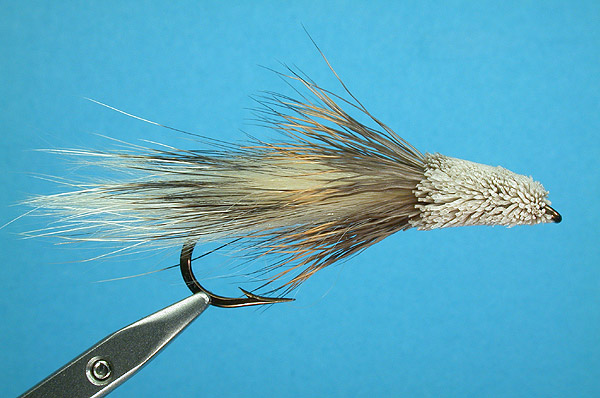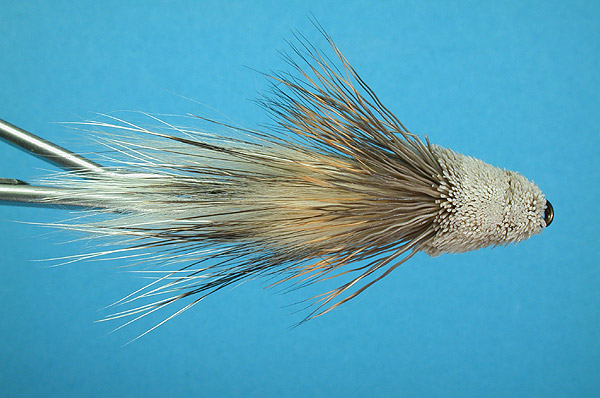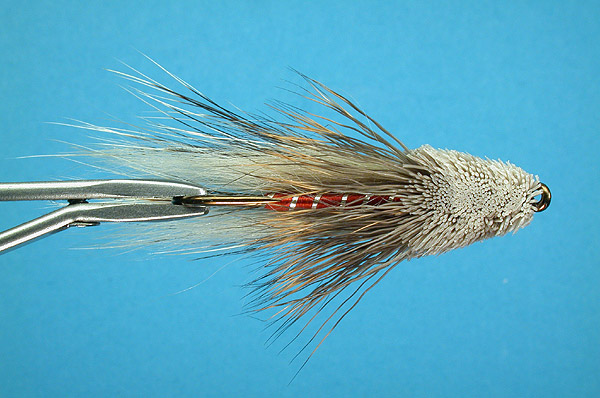Project Muddler Minnow: The Original and a Bunch of Variations
- Jason G. Freund
- Apr 2, 2023
- 6 min read
Don Gapen's Muddler Minnow is a classic that has evolved and been reshaped into the fly we typically see today. Gapen's original Muddler Minnow was created to imitate sculpin to catch those huge Nipigon Brook Trout. According to Ian Whitelaw's book, "The History of Fly-Fishing in Fifty Flies" (which I previously reviewed), the fly dates back to 1936 which is going on 90 years ago now so it has certainly stood the test of time. Like most historic patterns, it has seen a good bit of changes over the years and variations on the theme. I would argue that the muddler head gave rise to a massive number of flies ranging from slight variations - marabou muddlers and such - to any number of flies with deer hair heads ranging from Dahlberg Divers to Bufords. I would even give it credit for giving rise to a number of other flies like the Letort Hopper and hoppers that evolved from that concept.

Gapen's Original Muddler Minnow is a lot different than most of the Muddler Minnows we see today. This Don Gapen tied fly is certainly much more sparse than today's muddlers. (Wiki_Commons Image)
I have to wonder if the sparseness was a feature, not a flaw, in the original. Today, we tie them with a much larger, water pushing head but that head also makes the fly more buoyant. The original version would certainly be easier to fish near the bottom - which is where the sculpins it is meant to imitate live.

Another version of a Muddler Minnow from the Wikipedia page on the fly. This version has a much larger head, much more like the version we see today. (Wiki Creative Commons Image)
I have to admit that when I started fly fishing, I did not really "get" the muddler and it never worked for me. This was mostly because I could not get the fly to sink very well. I got why "in the olden days", people used them as grasshopper imitations as they float pretty well. The Wikipedia page for Dave's Hopper shows that the fly's origins are largely the Muddler Minnow. Now, I understand better that it fishes well on a sinking leader or with some weight on the leader. And as I learned to fly fish, I learned more about using the current to get the fly to sink. You can, of course, tie muddlers with weight as well - maybe a post for another day.

As someone that has taken a few ichthyology courses - and taught a couple myself - my most significant "issue" with the Muddler Minnow" is that it is called a minnow when it is meant to imitate a sculpin which are not minnows. As everyone knows, minnows are members of the Cyprindae family whereas sculpins are cottids which are most certainly not minnows.
When I am looking to understand and see a really good example of a fly and its proportions, the first place I look tends to be Charlie's Fly Box, Charlie Craven's flyshop and website. Maybe it is just that Charlie matches my aesthetic - but of course is a much better tyer than I could ever hope to be. His tie in the video above has a rather sparse wing so the body is more visible.
Bob Jacklin's Muddler Minnow in the video above is a little fuller and personally, I prefer the squirrel tail underwing as it give a mottling that kip (calf) tail does not. The issue with both squirrel and kip tail is that they are slick materials so be sure you have them tied in securely.
A Generalized Muddler Minnow Pattern
Hook: something 2X or longer
Thread: Many use different threads for the body and the head, the head needs a thread that will spin / stack deer hair.
Tail: Originally matched mottled turkey quills but there are tons of variations
Body: Tinsel of some sort
Underwing: Squirrel tail or calf (kip) tail
Overwing: Mottled turkey quill or your choice of materials
Collar: Deer hair tips
Head: Spun (stacked) deer hair
There are about as many ways to tie this fly as there are people that have tied it - that makes it my kind of pattern. Fly patterns are like cooking, not baking. As you saw above, the original Muddler Minnow is HIGHLY flexible and we have deviated exceedingly far from the original pattern. The main components are the body which has some flash to it and represents the baitfish's belly, a wing which represents the body, and a spun or stacked deer hair head. The one thing that makes a Muddler a Mudder, I think, is the deer hair head and collar.
Dan Bailey's version of the fly is certainly the best known variation on the Muddler theme. His Marabou Muddler Minow substitutes marabou for the tail and wings. This fly will tend to move better in the water as the standard turkey quill tail and wing are rather rigid. The version above has a few features that are interesting substitutions. First, tinsel chenille body gives the fly a bit more bulk - something hard to do with a tinsel body without weight underneath the tinsel. Second is the red tail which many tyers put on their Muddler Minnows. Personally, I'd rather have red near the head to imitate gills and possibly an injured fish than at the tail where it might result in short strikes. That said, I am sure that the millions of Muddlers have been tied with red tails work quite well.
From here, there are about a million variations on the Muddler Minnow. I do not hope to present all of them but below are a few of the more common and / or interesting variations that I am familiar with.

The Mangrove Muddler, which I wrote about some time ago, is an Aaron Adams pattern designed to fish around Florida's mangroves. I like the pattern because it uses the backside of a bucktail - something we often just throw away unless you're tying Buford heads on musky flies. It is a good smallmouth bass fly here in Wisconsin.
Gunnar Brammer's Pheasant Rump Muddler is very natural looking variation and the feather pectoral fins and coloration make for a very good, accurate sculpin imitation.
Another of the more common variations is the Conehead Muddler - as Kelly Galloup ties above. His version includes marabou and that red tail that is pretty commonly used. I like the conehead version as it reduces the issue of getting the fly to sink.

My conehead version above shows the versatility of the Muddler Minnow. I borrowed elements from a favorite streamer, the Zoo Cougar, which is a Kelly Galloup pattern. The Zoo Cougar is another variation on the Muddler Minnow that uses a broad head to help the fly wobble. My variation certainly loses that wobble with the conehead but it will get down and fish deeply.
On the conehead theme is the Zuddler which uses a zonker strip as the "wing". Wings on streamers seems like such an odd use of the word... Like all of these flies, there are many variations but I liked Mike's version above as it incorporates the red gills and I like flies with eyes. In olive, this would be an excellent sculpin imitation. I really like the barred zonker strip for flies like this - they look quite realistic.
The Rolled Muddler is a simple variation from the Pacific Northwest that was designed for fishing coastal cutthroat trout in saltwater beaches and estuaries. It looks like it would be an effective darter imitation in freshwaters.
The Steelhead Muddler is another variation with many, many variations itself. This fly, obviously deviates pretty far from the muddler theme and has a much reduced head. Still a muddler? Yeah, more or less.
The Kinky Muddler takes things another step away from the Muddler Minnow but it retains the Muddler name but not the deer hair head. Still a Muddler? Not really but I sort of get why it retains the Muddler name.
A Badger Muddler I tied some time ago, tied with a small, broad head to reduce buoyancy. Another variation on the Muddler theme - which are only limited by your imagination and materials on hand. Hans Weilenmann photos.
Lastly, I very recently came across a "snail muddler" by Davie McPhail - a truly out of the box Muddler. If we are talking versatility of the muddler "platform", this seems like a fitting place to end the conversation.
More in future installments about how to select materials, spinning deer hair, and other topics around how to tie and fish the Muddler and variations of it.
External Links
Video: The Original Muddler Minnow
Google video search - Muddler Minnow (56,500 results)








